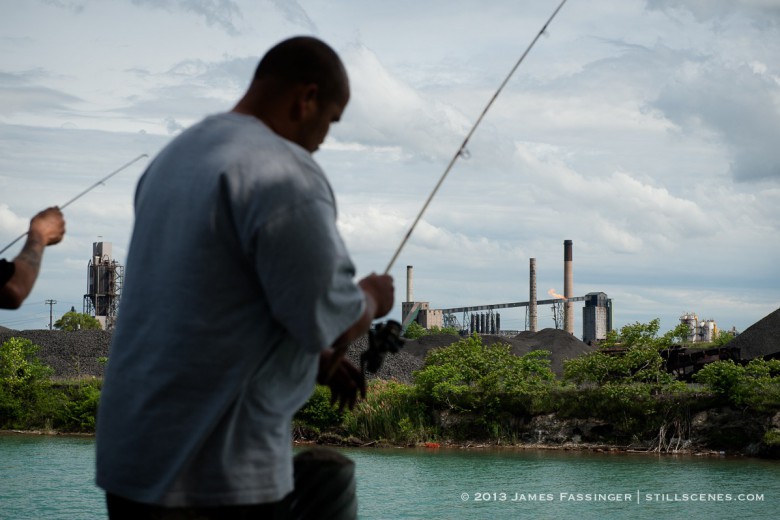
The spring of 2012 was a memorable one for farmers across Ontario. The winter had been mild, with little snow. A warm, dry, and windy March meant an early planting season. Of course, being farmers, we all knew we were probably going to pay for the early and easy planting conditions. As the dry and windy weather continued throughout the spring and into the early summer, pastures dried up and livestock farmers faced a shortage of winter feed. However, for Ontario beekeepers, the spring of 2012 was memorable for another reason – the thousands upon thousands of dead bees outside of their hives, including the hives of well-established, experienced beekeepers.
After testing the dead bees, Health Canada’s Pest Management Regulatory Agency (PMRA) found that the insects contained neonicotinoids – a class of insecticide applied to most corn and soybean seed in Canada. At the time, Ontario’s farm community believed that the bees were another casualty of the unusually dry and windy 2012 planting season. We assumed the dry winds stirred up and spread neonicotinoid-contaminated dust as planters and seed drills made their way up and down corn and soybean fields.
The spring of 2013 was as normal a planting season as we ever get in Ontario. Seeds generally went into the ground later in the season, so bees had more pollen available across the landscape, and calmer conditions meant less chance of dust blowing across the moister fields. For beekeepers, however, 2013 ended up being very similar to 2012. Once again, large numbers of bees were found dead in corn and soybean growing areas in Ontario, Quebec, and Manitoba.
In September 2013, after doing more tests on dead bees, the PMRA concluded that “current agricultural practices related to the use of neonicotinoid-treated corn and soybean seed are not sustainable.” Since then, the impact of neonicotinoids on bees, native pollinators, and our food sovereignty has become a hot – and often controversial – topic of discussion among farmers, beekeepers, and the general public in Ontario and beyond.
Even though other seeds, such as canola, are also treated with neonicotinoids, similar losses of bees have not been seen in other provinces. Karen Pedersen is a fifth-generation beekeeper with approximately 400 hives in the Cut Knife area of Saskatchewan. Based on conversations with other Saskatchewan beekeepers, she believes that beekeepers in Saskatchewan aren’t seeing the same impact from neonicotinoids or the scale of winter bee losses as in Ontario. “Saskatchewan bees can out-produce any hive in the country and Saskatchewan beekeepers are very good at figuring out how to deal with any challenges that come our way,” she says. However, there are new problems in Saskatchewan as well.
Even though Pedersen has successfully raised her own queens for two decades, she has been running into more difficulties raising queens over the last four years and is working with researchers and the provincial apiarist to determine the causes.
Last August, the Ontario Beekeepers’ Association (OBA) called for a suspension of neonicotinoid pesticide use on field crops. In an appearance before the Standing Senate Committee on Agriculture and Forestry in May 2014, the National Farmers Union (NFU) recommended that governments take a precautionary approach in regulating neonicotinoid seed treatments for field crops, starting with regulations to target use of the seed treatments to those acres where the benefit can clearly be demonstrated, while putting more emphasis on Integrated Pest Management (IPM). The OBA supported the recommendation.
Dennis Edell, an OBA board member, says, “To date, PMRA has focused on the dust issue as the major cause of issues with bee health. A bee health roundtable has been formed by Agriculture Canada whose members include representatives from Syngenta, Bayer CropScience, and CropLife Canada.” But, he adds, it “does not include [one] beekeeper from Quebec or Ontario.”
Edell says that “Ontario has concluded that there is enough science-based evidence pointing to the negative effects of neonicotinoids on pollinators to invoke the precautionary principle.” When asked about the differing circumstances for beekeepers in other provinces, Edell says, “With as much as 70 per cent of Canada’s corn and soybeans grown in Ontario, we are clearly more exposed than any other provinces. The OBA and the Fédération des apiculteurs du Québec have signed a joint letter [of solidarity] on the issue.” He adds that the Canadian Honey Council has also passed a resolution in support of Ontario’s proposed reduction of neonicotinoid use.
In a victory for beekeepers, this past November the Ontario government announced that it would bring in new regulations to target the use of neonicotinoid-treated corn and soybean seed, and require farmers to take training in IPM before using treated seed. The announcement came despite intense lobbying against regulation of neonicotinoid-treated seed by agrochemical organizations like CropLife Canada and farm commodity groups like the Grain Farmers of Ontario.
An urban/rural divide?
The principles of food sovereignty recognize and celebrate the right of all people, both those who produce food and those who eat it, to have a say in how our food is produced and shared. Many people in Canada innately understand the role of bees and wild pollinators in our food and farming systems. This understanding has spurred people to action and led to the Ontario government’s decision to regulate the use of treated seed.
Nathan Carey and Tarrah Young both grew up in urban surroundings but now run Green Being Farm, a successful livestock and vegetable farm, near Neustadt in midwestern Ontario. Although they do not keep bees, Carey has actively pushed farm organizations like the NFU to address the impact of neonicotinoids on bees. “When we, as a society, are choosing through our accepted agricultural practices to risk the fundamental place of pollinators within the ecosystem that supports our daily lives – well, that is an insane choice,” says Carey. “To stand up for the bees is to stand up and say the way things are going is not okay and to empower ourselves to enact a new way of being in the world.”
Similarly, Kim Fellows, the pollination outreach coordinator for Pollination Canada, a project of Seeds of Diversity Canada, has stepped up to advocate for bees and wild pollinators. Last spring she appeared before the Senate Standing Committee on Agriculture and Forestry. She recalls being “full of doubts and non-confidence” about appearing before the Senate. “I don’t consider myself an expert, but more of a dot connector,” she says. “I was desperate to leave the senators with the message that practices such as agroecology and permaculture are viable. I wanted the senators to know that contrary to the industry line, people are successfully growing food and making a living at it, and they are not using neonicotinoids.”
During a debate in the House of Commons in June of 2014, Gerry Ritz, the minister of Agriculture and Agri-food, said that he wasn’t interested in hearing the opinions of people from downtown Montreal or downtown Vancouver when farm issues were under discussion – he only wanted to hear from farmers. Similarly, commodity organizations and industry groups have tried to create an urban/rural divide when it comes to neonicotinoids and bees.
In a November 2014 press release, Henry Van Ankum, the chair of the Grain Farmers of Ontario said, “agriculture and rural Ontario have been put on notice – the popular vote trumps science and practicality.” Carey disagrees with this characterization. “We are blessed to live in a time where the divide between food producers and eaters is narrowing after a long period of isolation, and out of the silence eaters are asserting that ecosystem health is not an acceptable casualty of modern farming practices.”
“It is critical,” he continues, “that non-farmers continue to assert their values because it is their energy that can break open old assumptions and allow space for new ‘hows’ in agriculture. At the same time, non-farmers must also be sensitive to the present realities of farmers, and recognize that farmers may actually share their values but feel trapped by circumstance.”
Along with lobbying governments to take action, many non-farmers are looking for ways to help protect bees and native pollinators. Fellows says, “I see people doing the best thing they can: re-establishing native plants, which have co-evolved with their native pollinators, so that there is continuous bloom of nectar and pollen from early spring to late autumn. People across the country are converting lawns to natural areas, hosting seed swaps and pollinator parties, and bringing awareness to neighbourhoods.”
Pedersen has also noticed the increased interest people have in helping bees in Saskatchewan, but she voices a note of caution. She says that many new small beekeepers who have just one or two hives are choosing not to medicate for problems like varroa mites and American foulbrood. “I am thrilled to have more beekeepers,” she says, “but I wish they would learn more about managing bees before trying to manage bees without medication. It has taken me five generations of beekeeping and years of experience to move away from medicating my bees.”
In the end, our agricultural system – and not just neonicotinoid insecticides – may be the real problem facing bees. As Pedersen says, “If I was going to name a villain it would be the monoculture which has promoted sprays and fungicides, removed nutrients from our soils, taken out shelterbelts around fields, and led to a lack of nutrition for bees. A lot of knowledge is required to get away from pesticides with both bees and crops, and there is not enough of that knowledge out there.”






